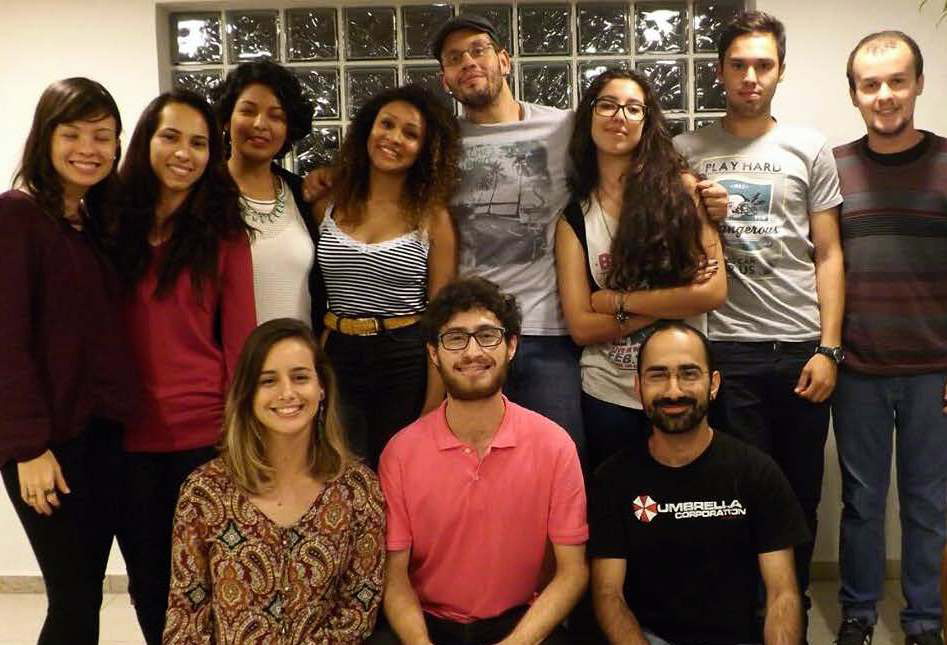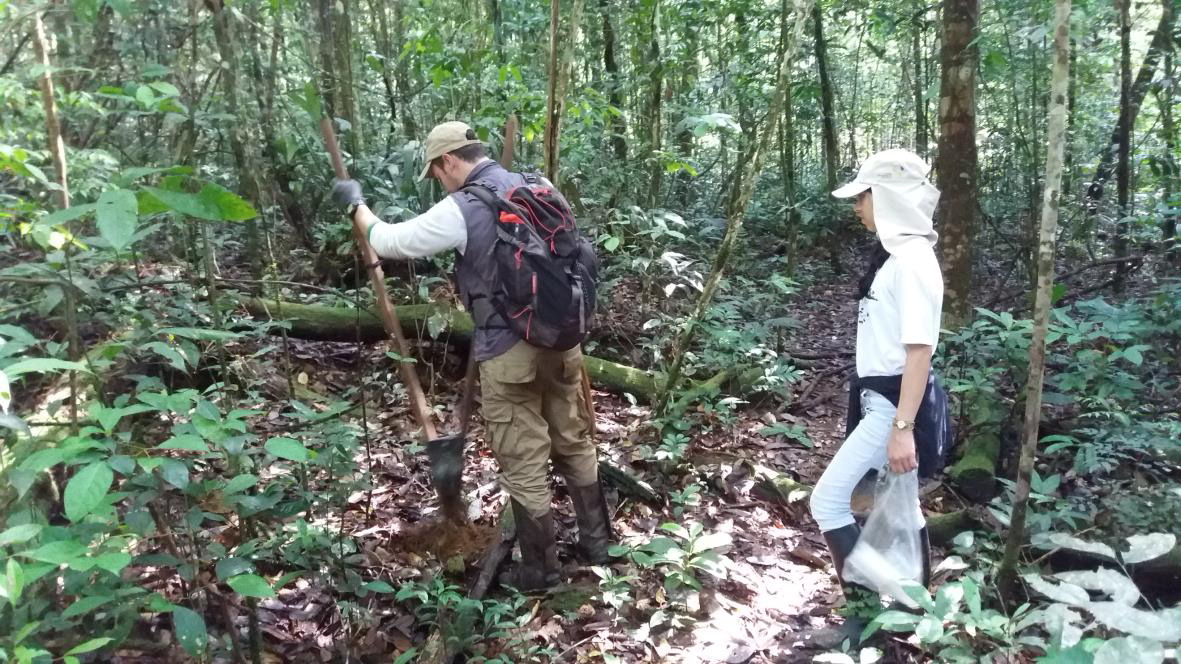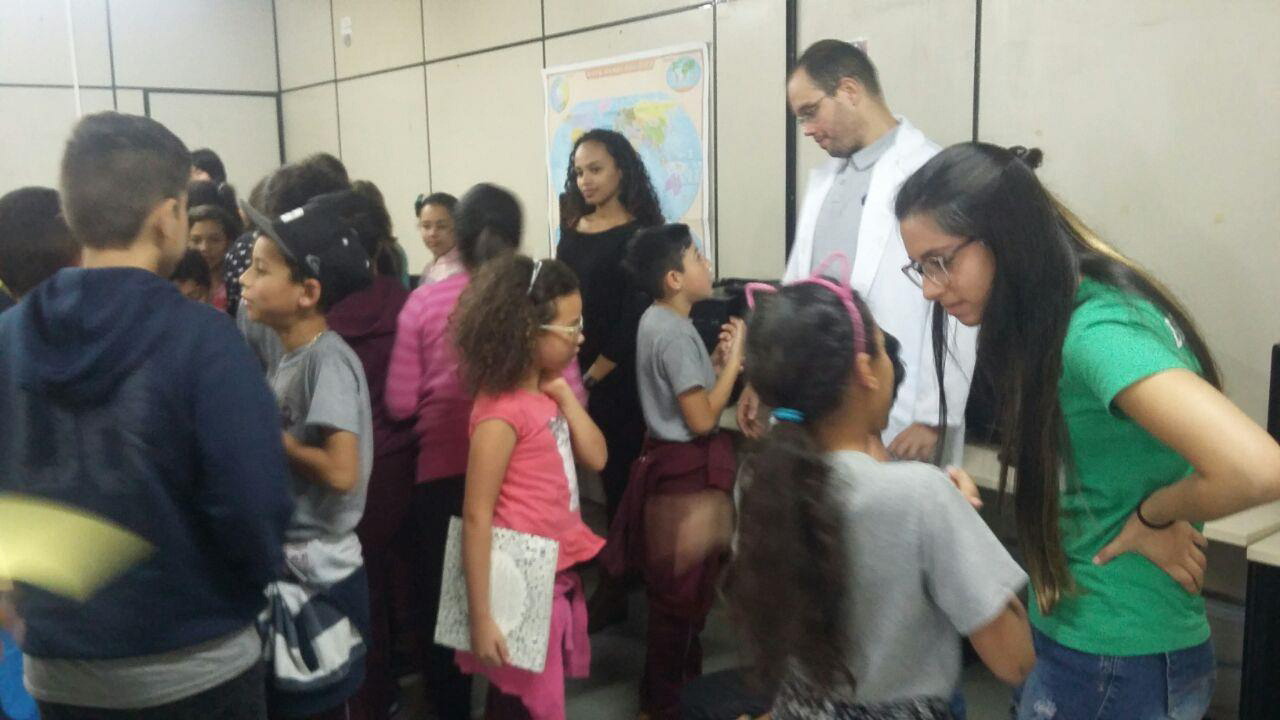The Amazon is one the most biodiverse regions in the world, yet it is under threat from human encroachment and global climate change. Biodiversity research has focused mostly on vertebrates, paying less attention to other taxa that are arguably more important for ecosystem health and function, such as insects. This is especially true of ants, which are incredibly species-rich, ecologically diverse, and have the highest biomass of any animal in the Neotropics. Ants are key ecosystem engineers, contain many different guilds, and are often highly sensitive to environmental perturbation, which makes them ideal bioindicators. Using ecologically relevant bioindicators allows highly sensitive insight into rapid changes in habitat health and ecosystem function. Unfortunately, a taxonomic impediment limits their use, since many tropical species are undescribed or new to science, greatly slowing morphological species identification. This research study seeks to address this shortcoming by conducting an inventory of ant diversity using DNA sequence data. The collected samples will form the nucleus for a growing entomology collection at the Universidade Federal do Paraná (UFPR), which will be developed into an active research collection to support the study of systematics, biodiversity, and natural history of the ant fauna of the Amazon and Brazil.
Ants contain several important tropical agricultural pests and invasive species. The project will thus be important for Brazilian agriculture and food security as potential pest species will be identified. Assessment of ant biodiversity at various levels and assigning species to functional guilds will lay the baseline for continued monitoring of ecosystem health and biodiversity under climate change, and will help inform conservation decisions by allowing rapid and efficient appraisal of ecosystems. The development of cheap and rapid genetic identification tools is expected to have immediate and lasting impact on biodiversity assessment and conservation practices in the Amazon. Coupling genetic and species-level biodiversity assessments with ecological functional information will improve economic valuation and management impact of ecosystems. This will strengthen environmental governance and advance sustainable management of natural resources and biodiversity conservation in the face of environmental and global climate change. The use of genetic markers will allow in-depth understanding of pest and bioindicator population genetics and dynamics, which are important considerations when developing and applying control or conservation management plans. Additionally, the generation of high-throughput DNA barcoding and next-generation population genomic data will form the foundation for cutting-edge science, technology, and innovation in conservation genetics and bio control and will provide a long-term investment for the PI Dr. Feitosa to develop and train genomic capacity in Brazil.
In the third quarter of 2018, as the project moved towards completion, Dr. Feitosa and his team carried out two final field expeditions. In July, the PI and three students (Mila Martins, Natalia Lópes, and Alexandre Ferreira) undertook a collecting expedition to the Serra Bonita Reserve, in the state of Bahia, northeastern Brazil. The last expedition took place in late August and marked the first international field trip of the project. Alexandre Ferreira and Maria Fernanda Almeida collected ant specimens at the Station des Nouragues, a scientific reserve of the French National Centre for Scientific Research (CNRS) in French Guiana, near the border with Brazil. Both the Serra Bonita and the Station des Nouragues areas are strategic localities for the broad approach of this project, as they represent distant and physiognomically distinct regions of the Amazon Forest. The specimens collected will allow the team to test the genetic structure of the ant assembly in the Amazon in a more robust way.
During the expeditions, the researchers once again had the opportunity to organize meetings with the leaders of local environmental agencies and small villages to present the project and explain the importance of scientific research for the conservation of natural areas using ants as models. The ant samples recently collected are being processed and will be soon submitted for DNA extraction and analysis. In a parallel action, once again the PI and his group established an agreement with the Curitiba City Hall to develop scientific capacity activities at public primary schools in the city. In particular, they carried out a second edition of the “Scientists Go to School” project, visiting two primary schools in Curitiba, the Ana Hella Primary School and the Madre Teresa de Calcutá Primary School. They developed small workshops and scientific activities with financially vulnerable children (4-10 years old) and demonstrated routine operations from their field work in the Amazon.
To sum up the results and impacts, during the four years of project, which ended as of September 30, 2018, three scientific papers were published and many more are expected in the coming months. Around ten presentations about the project results were made in at least five different international events, and the PI and his team organized one major event, Fomigas do Brasil 2016. They completed six field expeditions to some of the most remote biodiversity host-spots in the Brazilian Amazon. Thousands of ant samples were collected and submitted according to original protocols for processing, DNA extraction, and sequencing using Ultra-Conserved Elements that were developed as part of this project. These samples encompass a considerable number of new species and will be extremely valuable in suggesting interesting questions in ant evolution, ecological importance, and much more broadly. During the project, the researchers conducted a series of meetings and workshops with local agencies and financially vulnerable people at the study sites and primary schools. They also established an extremely advanced research center for the study of evolution, diversity, and taxonomy of ants. A total of 17 young students, 12 of them female, were scientifically trained and developed Master’s, PhD, and undergraduate theses within the scope of the project. Finally, the PI expects that the results will form the basis for a series of public policy recommendations on the collection, comparison, and conservation of the arthropod soil fauna, especially ants. Some of the results of the project are still to be achieved. However, the team’s new collecting protocols and storage techniques have proven to be of essential importance to the development of a standardized methodology to access, collect, process, store, and genetically sequence the most diverse samples of ants. This protocol has the potential to be widely employed in ant surveys at a global scale. In fact, the PI has already proposed a secondary project, “Ant-PELD,” an initiative to collect, process, and sequence ants for all the Brazilian biomes, using the protocol originally created in his PEER project. Meanwhile, the proposed molecular protocol for DNA extraction and analysis for ants using Ultra-Conserved Elements is already a reality not only in the PI’s working group but also in many other myrmecological labs around Brazil. Researchers from different institutions in the country are already sending the PI samples from various localities in order to have the material analyzed in his recently established and upgraded molecular biology lab.
Regarding the facilities of the Zoology Department of UFPR, PEER support made it possible to create a state-of-the-art molecular biology laboratory, as well as a laboratory equipped with the most advanced optical and imaging equipment. This structure already allows students, not only from Dr. Feitosa’s group but also from the entire department, to develop high level research in the areas of evolution, morphology, diversity, and insect systematics. Although the project has ended, this infrastructure is permanent and will facilitate scientific production in zoology at UFPR for a long time to come.
It is also noteworthy that the ant collection of UFPR is now one of the most representative in the world, thanks to the specimens collected during field expeditions of the project and the structure of entomological cabinets, draws, boxes and pins obtained. As for the ant species captured so far, Dr. Feitosa and his team are migrating their data to the Brazilian Biodiversity Information and Authorization System - SISBIO (
http://www.icmbio.gov.br/sisbio/) and to the Taxonomic Catalog of the Brazilian Fauna - TCBF (
http://fauna.jbrj.gov.br/fauna/listaBrasil/PrincipalUC/PrincipalUC.do?lingua=en). Both systems aim to provide an integrated list of valid genera and species found in Brazil by geographic area and biome in order to inform a public strategy document for the conservation of Brazilian biodiversity. Thanks to the PEER project, the group is the main contributor to these databases regarding the ant fauna in Brazil.
Following is a link to a paper published by Dr. Feitosa and co-authors--more publications are expected in the coming months: March, C.J.; Feitosa, R.M.; Louzada, J.; and Ewers, R.M. Is beta-diversity of Amazonian ant and dung beetles communities elevated at rainforest edges?
Journal of Biogeography, 2018. (
https://doi.org/10.1111/jbi.13357).






